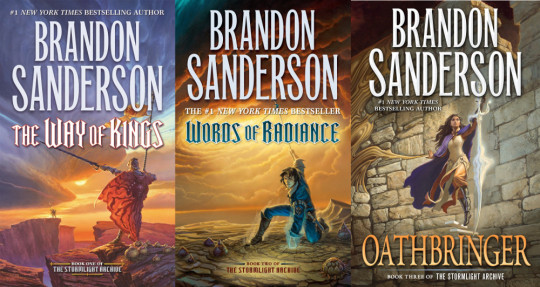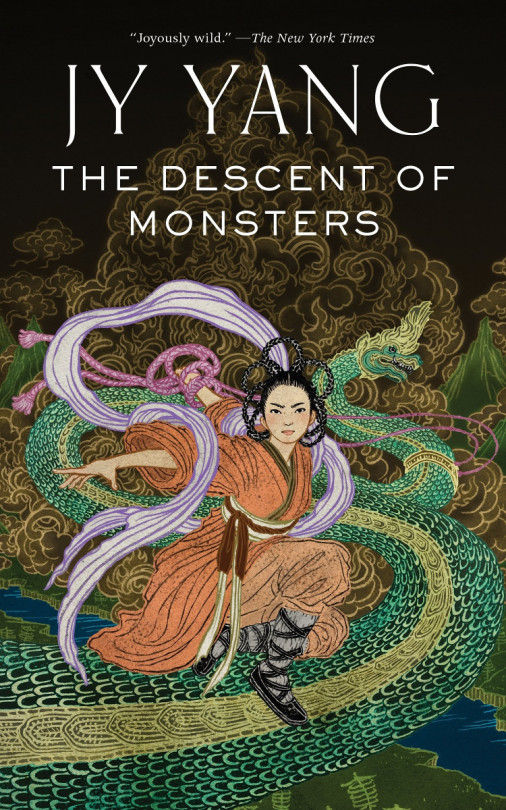Tachyon tidbits featuring George R. R. Martin, John Picacio, Nalo Hopkinson, Brandon Sanderson, and JY Yang
The latest reviews and mentions of Tachyon titles and authors from around the web.

George R. R. Martin & John Picacio (Photo: Francesca Myman), Nalo Hopkinson (David Findlay), Brandon Sanderson (Ceridwen via Wikimedia Commons), and JY Yang (Scott Edelman)
LOCUS reports on SF in SF with George R. R. Martin and John Picacio.
George R.R. Martin appeared on stage in conversation with artist John Picacio on August 14, 2018 at the historic Fox Theatre in Redwood City CA. The event was hosted by SF in SF, with proceeds from ticket sales benefitting the Locus Science Fiction Foundation. An audience of nearly 600 (including various genre luminaries in town for Worldcon) gathered for a wide-ranging discussion that stretched over more than two hours (with a Q&A period). Picacio and Martin covered topics including Game of Thrones and other media adaptations of Martin’s work, his love for SF art, his writing process, his early successes and setbacks, his work in the Wild Cards shared universe, his views on the importance of Worldcon, and advice for young writers. (When Picacio asked how the forthcoming Song of Ice and Fire volume The Winds of Winter is going, Martin roared, “I’m working on it!” to applause.)

Fox Theater Lobby (by Francesca Myman)
Steve Foxe at PASTE interviews Nalo Hopkinson, Dominike “Domo” Stanton, John Rauch & Deron Bennett about a key scene in first issue of House of Whispers, one of the four new titles in the Sandman Universe Series.
Writer: Nalo Hopkinson
One of the huge delights for me as a prose person is seeing the people, settings and scenes I envision become real images. I’m very fond of this spread. It’s the first scene I imagined for this first issue, and everyone has made it so gorgeous! It is set in the main ballroom of the house of Mistress Mambo Erzulie Freda of Dahomey. She is the loa (or lwa, or orisha, or deity) of love and luxury. She’s hosting a party attended by the spirits of her human followers.
I have combined a number of different traditions from this belief system. It’s a set of real-world living religions with millions of believers, so I’m trying to reference as many of those traditions as I can throughout the series. Erzulie sits in state on her throne in the center. I asked for her to be in mermaid form, holding her mirror. I was also adamant that she should have a goodly amount of meat on her bones. A skinny mermaid is a chilly mermaid. She is greeting Uncle Monday, a shape-shifting alligator man from a Florida folktale which references the fact that many Africans who escaped slavery in the region were welcomed by the local Seminole peoples.

House of Whispers #1 Interior Art by Dominike “Domo” Stanton, John Rauch & Deron Bennett
At TOR.COM, Martin Cahill includes books from Brandon Sanderson and JY Yang in Outside the Lines: Unique Narrative Devices in Fantasy.
There’s something appealing about a book that does things a little differently. Maybe it doesn’t break the rules, but bends them? Tries something new? Experiments with narrative? That’s absolutely my jam. I love when writers find new ways, new formats, and new styles to help elevate narration. Tricks of the trade that deliver information, or tell the reader something new, or force them to look at a story in a new way.

The Stormlight Archive by Brandon Sanderson
Sanderson is no stranger to utilizing epigraphs to teach readers about his world, and that device is most on display for his epic series, The Stormlight Archive. Set on the planet Roshar, a world wracked by frequent magical hurricane-like storms, this planet is home to several god-like beings, complicated cultures, deep histories, and much more. Sanderson explores those in his epigraphs before each chapter, where he details in-world letters between characters, quotes from historical figures, texts from history books, and more. He’ll also feature small short stories about events that are happening throughout the world, that may not directly affect the plot, but create a more immersive experience for readers. It helps the world remain grounded, while also expanding it in a way that feels and looks organic, but is actually a very clever mechanic to highlight world-building without info-dumping.

The Descent of Monsters by JY Yang
Continuing the tale that they began in their first two Tensorate novellas, Yang does something completely unexpected and fresh in their third novella, The Descent of Monsters: it’s told entirely in an epistolary format. The story of a Tensorate official working to uncover the tragedy that occurred at the Rewar Teng Institute of Experimental Methods, Investigator Chuwan begins to suspect foul play and must work to understand what happened, and uncover whether the mysterious Rider and Sanao Aheka of the Machinists are involved in the atrocity. Told in a series of letters to loved ones, official Tensorate reports and interviews, blacked-out government documents, and more, Yang does what they do best: tell a compelling story in an inventive format, continue to unfold the mysteries of their world, and create lively and complex characters in between the pages of letters. This novella is an incredible feat of style and structure, as well as story, and I can only hope Yang continues to push their work in new and unexpected directions as they have here.
